Prairies really begin to shine in the fall as the native grasses turn copper, bronze or gold. The tall flower stalks of Maximilian sunflower (
Helianthus maximiliani) rise above this golden grass palette, unveiling clusters of large yellow flowers. Early Europeans traveling by horse through the Midwest’s tallgrass prairies probably had the flowers of Maximilian sunflower looking back at them — abuzz with pollinators and beneficial insects.
This late-blooming sunflower, like New England aster, fills an important niche in the fall, providing forage for both pollinators and beneficial insects. Plant this tall sunflower in informal prairie plantings, butterfly or pollinator gardens, or as a backdrop in large traditional perennial borders.
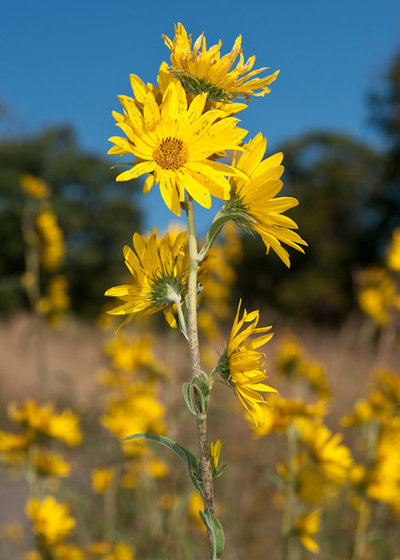
Holm Design & Consulting LLC
Botanical name: Helianthus maximilianiCommon name: Maximilian’s sunflower
Origin: Native to all of North America except Alaska, Oregon, Nevada, Utah, Arizona, Louisiana, Georgia, Florida, Vermont and New Hampshire in the U.S.; in Canada it does not occur in Newfoundland, Prince Edward Island, Nova Scotia, New Brunswick or the Canadian territories
Where it will grow: Hardy to -45 degrees Fahrenheit (USDA zones 2b to 8b; find your zone)
Typical plant communities: Prairies, meadows, savannas, bluffs and woodland openings
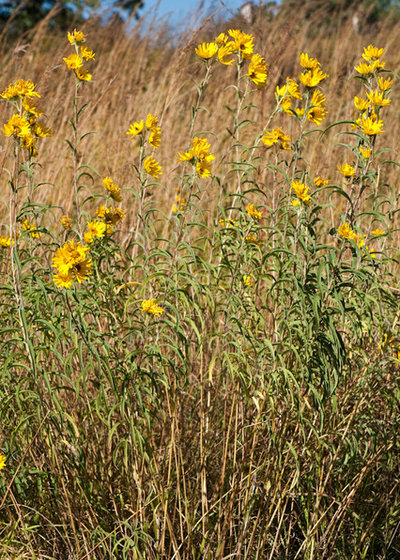
Holm Design & Consulting LLC
Soil requirement: Mesic to dry, sandy-loam to clay-loam soil
Light requirement: Full sun
Mature size: 3 to 10 feet tall and 3 feet wide
Benefits and tolerances: Tolerates most soil types, including limestone-rich soil; avoid planting in heavy, wet clay; very versatile as long as the plants are sited in full sun
Seasonal interest: Large, bright yellow flowers in late summer and fall from August to October
When to plant: Spring
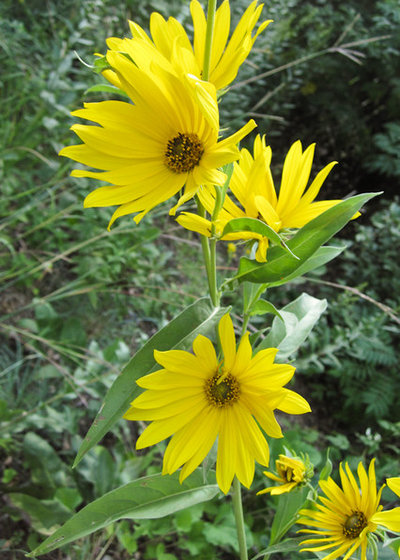
Holm Design & Consulting LLC
Distinguishing traits. Upright, tall flower stalks give rise to clusters of yellow flowers; the leaves have a fold along the midvein, giving them a narrow, pointed form.
How to use it. Maximilian sunflower historically occurs in tallgrass prairies. It therefore works very well combined with tall prairie grasses, such as Indian grass (
Sorghastrum nutans), big bluestem (
Andropogon gerardi) and switchgrass (
Panicum virgatum).
Due to its size, it’s best to use this native perennial in informal or naturalized landscapes where fall color is needed. It also works well as a backdrop in a perennial border and can be used as an herbaceous hedge. Plant tall plants next to Maximilian sunflower to prevent its tall flower stalks from flopping over.
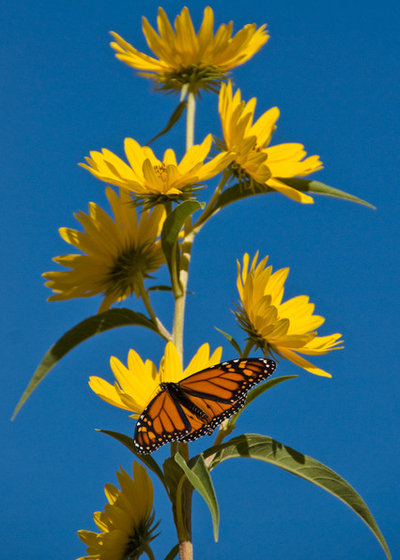
Holm Design & Consulting LLC
Planting notes. In droughty situations, Maximilian sunflower will not reach a height of 10 feet — 5 feet is more typical. The roots are fibrous and often thick and somewhat woody, combined with rhizomes. The plants spread outward by the rhizomes, forming large clusters over time.
In winter the tall flower stalks stick out above the snow, providing seeds for birds and small mammals. The seeds are an important source of protein for wildlife, especially in areas with significant snowfall.
Shown: Monarch butterfly (
Danaus plexippus)
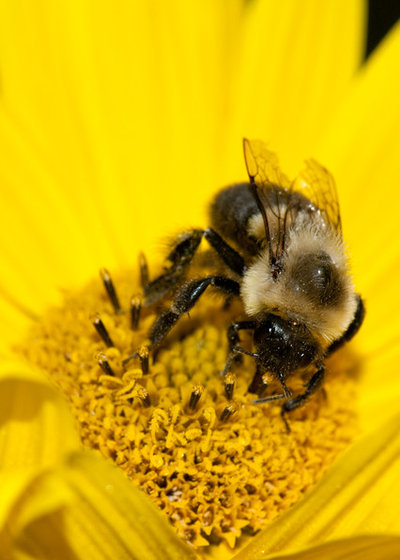
Holm Design & Consulting LLC
Pollinator notes. Maximilian sunflower, like all plants in the
Helianthus genus, is an important source of nectar and pollen for pollinators. The bright yellow composite flowers are composed of outer yellow ray florets and inner yellow disk florets. The flower color, combined with the open flower form and shallow disk florets in the center, offer nectar and pollen to all visiting pollinators regardless of their physical size or tongue length. Survival for insect pollinators is tenuous in the fall as temperatures drop and the risk of frost increases.
Shown: Eastern bumblebee (
Bombus impatiens)
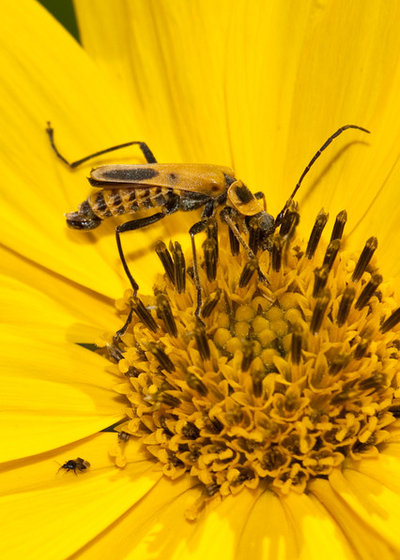
Holm Design & Consulting LLC
Pollinators are unable to fly if their body temperature gets too cold. Fortunately, Maximilian sunflower’s flowers track the sun throughout the day, providing pollinators with a flat landing platform and a warm place in which to forage. This microclimate helps keep pollinators warm, on the move and pollinating the next Maximilian sunflower nearby.
This plant also provides late-season food for beneficial insects (insects that prey on problem populations of insects). Shown here are two beneficial insects: a soldier beetle (
Chauliognathus sp) and a minute pirate bug (
Orius sp), who are both predators of aphids and other soft-bodied insects.





